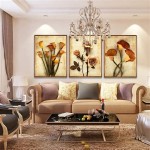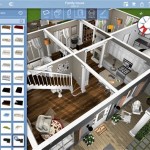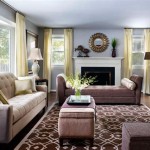```html
How To Decorate a High Ledge in Your Living Room
High ledges in living rooms, often found in modern or renovated homes, present a unique design challenge. These architectural features, while potentially adding visual interest and spaciousness, frequently become neglected spaces or catch-all areas for clutter. Effective decoration of a high ledge can transform it from an awkward afterthought into a focal point, enhancing the overall aesthetic of the living room. This article will explore various strategies and considerations for decorating a high ledge, offering practical insights to achieve a balanced and visually appealing space.
Assessing the Space and Defining the Purpose
Before embarking on any decorating project, a thorough assessment of the high ledge is crucial. This assessment involves considering several factors that will influence the design choices. Firstly, the dimensions of the ledge – its length, width, and height from the floor – need to be accurately measured. These measurements will dictate the scale and quantity of decorative items that can be accommodated. A long, narrow ledge might benefit from a series of smaller objects, while a shorter, wider ledge could handle larger, more impactful pieces.
Secondly, the architectural style of the room and the existing décor play a significant role. The ledge decoration should complement the overall aesthetic, whether it's modern, traditional, eclectic, or minimalist. For instance, a rustic-themed living room might call for natural elements like wooden sculptures or woven baskets on the ledge, while a contemporary space could benefit from sleek, geometric art pieces.
Thirdly, the purpose of the ledge should be defined. Is it intended to be a purely decorative feature, or will it serve a functional purpose, such as displaying books or holding plants? The intended use will influence the choice of items and their arrangement. A purely decorative ledge offers more freedom in terms of artistic expression, while a functional ledge requires consideration of accessibility and practicality.
Finally, consider the lighting in the room. Natural light can significantly impact the appearance of objects on the ledge. If the ledge receives ample sunlight, consider plants that thrive in bright conditions. Conversely, if the ledge is in a dimly lit area, strategically placed artificial lighting can highlight the decorative elements and create visual interest. Downlights or spotlights directed upwards can cast a dramatic glow on the ledge, drawing attention to its features.
Selecting the Right Decorative Elements
The selection of decorative elements is pivotal in achieving a visually appealing high ledge. A diverse range of options exists, each offering unique aesthetic qualities. Artwork, plants, sculptures, and decorative objects are all viable choices, and a combination of these elements can create a dynamic and engaging display.
Artwork, such as framed prints or canvases, can add color, texture, and personality to the ledge. Consider the size and style of the artwork in relation to the ledge's dimensions and the overall room décor. A series of smaller prints arranged in a gallery-style display can be visually striking, while a single large canvas can create a bold statement. Abstract art can add a modern touch, while landscapes or portraits can evoke a more traditional feel.
Plants are an excellent way to introduce life and vibrancy to the ledge. Trailing plants, such as ivy or pothos, can cascade over the edge, creating a soft and organic feel. Upright plants, such as snake plants or ZZ plants, can add height and architectural interest. Consider the light requirements of the plants and choose varieties that thrive in the ledge's environment. Artificial plants are also an option for areas with limited sunlight, but it's important to choose high-quality artificial plants that look realistic.
Sculptures and decorative objects can add texture and visual interest to the ledge. Consider incorporating pieces made from different materials, such as metal, wood, glass, or ceramic. Vases, bowls, and figurines can all add character and personality to the space. Grouping objects of varying heights and sizes can create a dynamic and visually appealing arrangement. Consider the color palette of the room and choose objects that complement or contrast with the existing décor.
Books, while functional, can also be incorporated into the decorative scheme. Stacking books horizontally or vertically can add visual interest and create a sense of intellectual curiosity. Consider arranging books by color or size to create a more cohesive look. Antique books or books with decorative covers can add a touch of vintage charm.
Lighting fixtures themselves can serve as decorative elements. String lights can add a whimsical and festive touch, while small lamps can provide task lighting and create a warm ambiance. Consider using battery-operated lights to avoid the need for unsightly cords. The color and style of the lighting fixtures should complement the overall décor of the room.
Arrangement and Styling Techniques
The arrangement and styling of the decorative elements are just as important as the choice of items themselves. A well-arranged display can transform a collection of objects into a cohesive and visually appealing composition. There are several principles of design that can be applied to the styling of a high ledge, including balance, symmetry, asymmetry, and layering.
Balance refers to the distribution of visual weight within the arrangement. Symmetrical balance involves arranging objects in a mirrored fashion on either side of a central point. This creates a sense of formality and order. Asymmetrical balance, on the other hand, involves arranging objects of different sizes and shapes in a way that still feels balanced. This creates a more dynamic and informal look.
Symmetry is achieved when elements are mirrored on either side of a central axis. While often used for formal arrangements, it can also be incorporated subtly by using similar shapes or colors on either side of the ledge. Asymmetry creates visual interest and dynamism. Employing varying heights, textures, and positions helps to guide the eye and keep the arrangement from feeling static.
Layering involves placing objects in front of or behind each other to create depth and dimension. This can be achieved by placing smaller objects in front of larger objects, or by stacking books and placing objects on top of them. Layering adds visual interest and prevents the display from feeling flat.
Consider the rule of thirds, a principle of design that suggests dividing the ledge into three equal parts, both horizontally and vertically. Place key objects at the intersection points of these lines to create a visually balanced and harmonious arrangement.
Vary the heights of the objects to create visual interest. Use risers or platforms to elevate some objects above others. This will add depth and dimension to the display. Group objects in odd numbers, as odd numbers tend to be more visually appealing than even numbers. A grouping of three or five objects is often more pleasing to the eye than a grouping of two or four.
Leave some negative space between the objects to allow them to breathe. Cluttering the ledge with too many items can make it feel overwhelming and visually chaotic. Allowing for some empty space will help to create a more balanced and harmonious arrangement.
Periodically rearrange the objects on the ledge to keep the display fresh and interesting. This is a simple way to update the look of the room without having to purchase new items. Experiment with different arrangements and find what works best for your space.
Dusting and cleaning the ledge regularly are essential for maintaining its appearance. Use a soft cloth or duster to remove dust and debris. For delicate objects, use a can of compressed air to remove dust from hard-to-reach areas. Protect the ledge surface from scratches and stains by using coasters or felt pads under objects.
By carefully considering these factors and implementing these strategies, a high ledge can be transformed from a neglected space into a beautiful and functional feature that enhances the overall aesthetic of the living room.
```
Ledge In The Living Room Shelf Decor High Ceiling Wall

22 Best Ceiling Ledge Decor Ideas High Decorating

Decorating A Bedroom Plant Ledge Shelf Ideas Decor Living Room

Splendor On High How To Style The Spots In Your Home Nell Hill S

47 Ledge Ideas Decor Foyer Decorating Plant

How To Style Shelves And Ledges House Mix

High Ledge Decorations Decor Shelf Living Room Kitchen

High Pot Shelf Creates Decorating Opportunity Home And Garden Life

Snake Plant Basket Ledge House Mix

22 Best Ceiling Ledge Decor Ideas High Decorating
Related Posts







